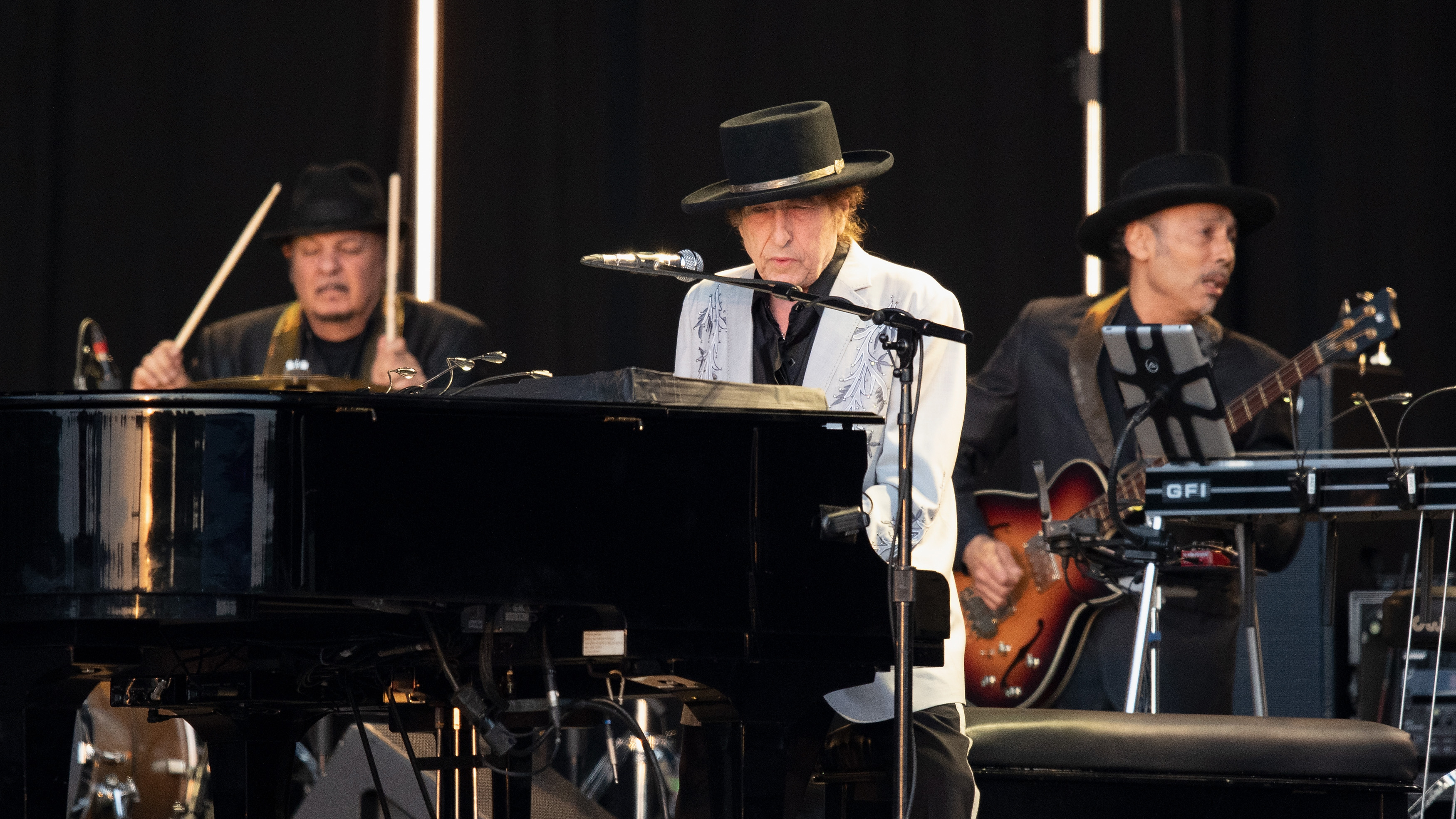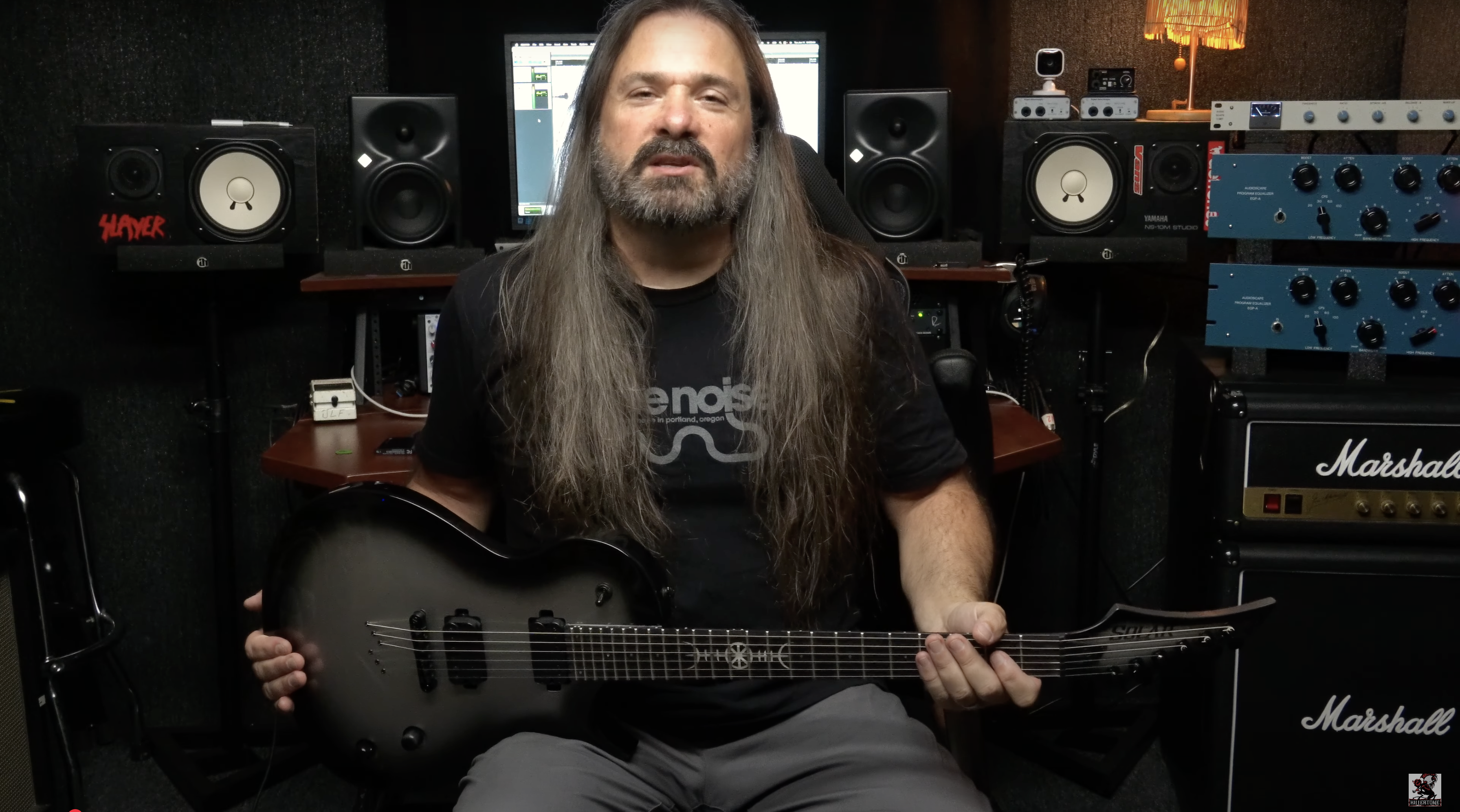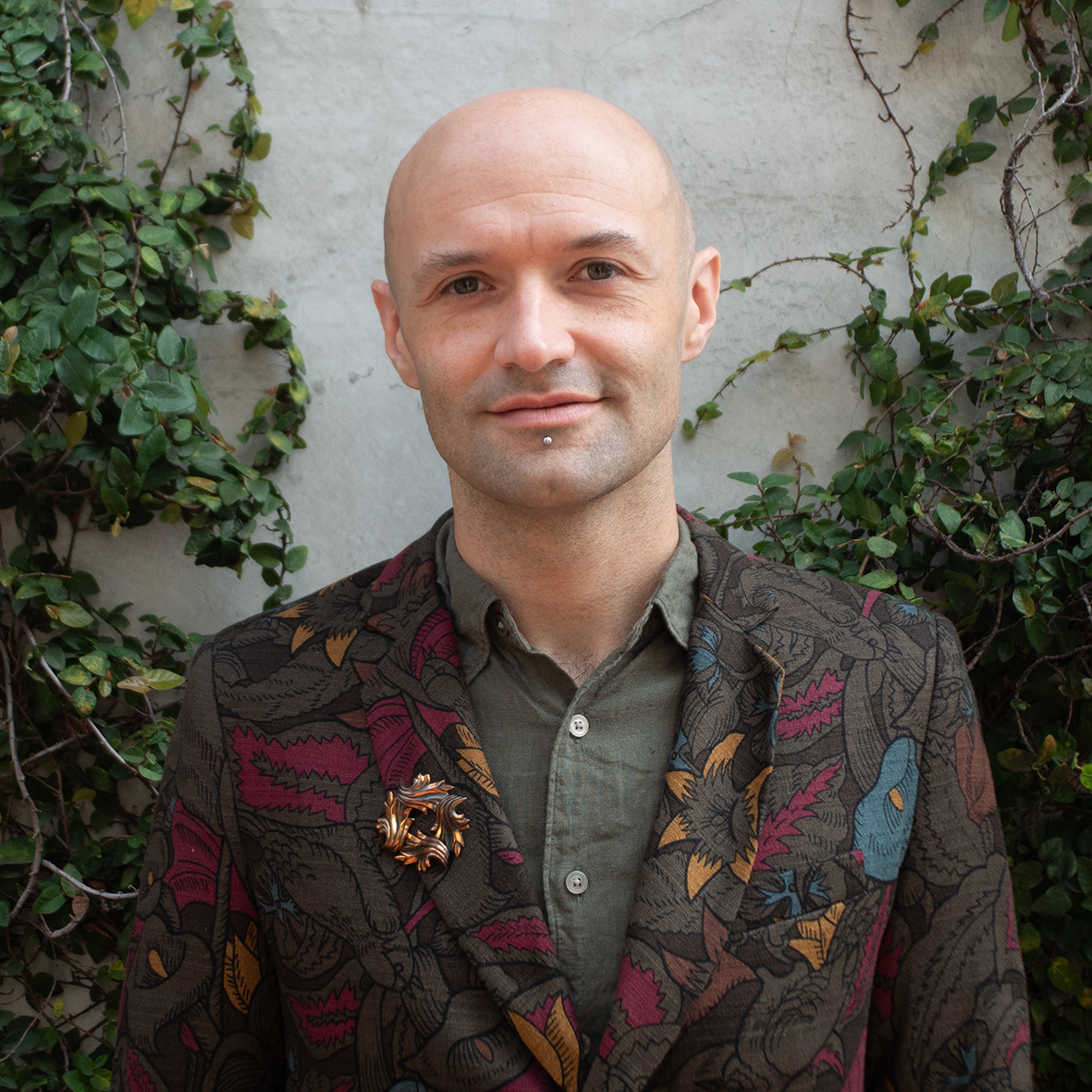“I was frightened, but I was like, ‘ok, big boy pants time. Step up to the plate, here comes the pitch and you can either knock it out or you can strike’”: Bob Dylan's live engineer Jason Frankhouser on mixing front-of-house for The Never Ending Tour
The veteran engineer gives us a rare behind-the-scenes insight into mixing sound for one the most well-established live shows on the planet

“My first show was Buffalo, New York, 2013. I'll never forget it.”
Jason Frankhouser has a lifetime of experience behind a sound desk. Having spent nearly a decade as the in-house engineer for the beloved Stubbs Bar-B-Q amphitheater in Austin, Texas, and out on the road mixing shows for artists like Billie Joe Armstrong, Edie Brickell and Jawbreaker, you’d think that no single concert would loom so large in his memory. However, that particular show back in 2013 was something special – it was the first time he mixed front-of-house sound for Bob Dylan.
Since 1988 Dylan has played close to a hundred shows a year. Affectionately dubbed ‘The Never Ending Tour’ by his fans, it’s perhaps one the most well-established live shows on the planet. So, how did Frankhouser feel stepping up to helm the sound desk for one the most famous musicians alive?
“I was frightened,” he recalls with wry good humour. “But I was like, ‘ok, big boy pants time. Step up to the plate, here comes the pitch and you can either knock it out or you can strike. First rattle out of the hi-hat and boom – it was a pretty good show.”
Some twelve years on from that first gig and Frankhouser has become an intrinsic part of the top-tier sound that fans expect from The Never Ending Tour. It’s a lifestyle that keeps him constantly on his toes as the band rambles from city to city, and Dylan, a legendarily mercurial live performer, varies tempo, style, and delivery with each show.
"Even if it's the same song as the night before – they don't play it the same way. Bob doesn't sing it the same way"
“Even if it's the same song as the night before – they don't play it the same way,” remarks Frankhouser. “Bob doesn't sing it the same way. They’re always moving and shifting in interesting musical ways. You just have to lock in with what's going on, and that's where the fun for me really is.”
With long hair, a beard, and frequently seen sporting t-shirts from his favourite metal bands, Frankhouser might seem somewhat out of place mixing for one of the foremost proponents of Americana, folk, and blues. It’s a perception that’s not lost on him.
Want all the hottest music and gear news, reviews, deals, features and more, direct to your inbox? Sign up here.

“People always say ‘you work for Bob Dylan – how can you be such a metalhead?’” He remarks with a verbal eye-roll. “It doesn't even compute with me at all. You know, Johnny Cash and Slayer are the same. Sonically, of course there's differences, but it's still human beings playing instruments, making music.”
To be clear, Frankhouser’s metalhead bona fides are no joke. Having played rhythm and lead guitar in heavy bands for much of his life – including stints in Austin favourites, Human, Course of Ruin, and what he describes as a “very brutal” recent release with the death metal outfit, Martyred, he knows his way around a fretboard every bit as well as a mixing console.
"People always say ‘you work for Bob Dylan – how can you be such a metalhead?'"
While his love for heavier music is clear, it would be a mistake to pigeonhole Frankhouser in any single genre. “My father owned a country radio station,” he recalls of his early experiences with music. “I would go straight from school to sit in the booths with the DJs – and these were actual disc jockeys who’d take the record and put the needle on them. So, I’d sit in there and listen to Charley Pride, Conway Twitty, and George Jones. Amazing stuff that I still love to this day.”
Having picked up the guitar around age 12, by the end of high school, Frankhouser was offered a jazz scholarship to attend university – something that he briefly tried, but quickly gave up in favour of gigging around Austin. “I played constantly throughout my late teens and all through my 20s and 30s,” he recalls. “And to supplement my income, I decided I’d always make my own recordings.”
“My two older brothers had a sound system and a mixing console,” Frankhouser continues. “I was blown away by it – it was an Allen and Heath, which was a rare thing to have in our little town. So, I just started learning how the signal flow worked and taught myself.”
"They were like, ‘dude, your playing is really good’. Next thing I knew I’d started a channel"
That love of studio recording hasn’t diminished over the years, in addition to racking up production and mix engineer credits from the various metal bands he’s played with, Frankhouser has also leant his ear to other genres. Most recently working with Rochelle & The Sidewinders on their recent album, Soul Kiss. “It’s a blues, R&B, soul kind of band,” he says of the project. “I loved working on that – I produced the entire thing, engineered it, mixed it, mastered it, everything.”
A self-confessed gear nerd, Frankhouser also runs the longstanding KillerToneTexas YouTube channel where he diligently puts guitar pedals and amplifiers through their paces. “I actually started doing that on forums back in the early 2000s,” he says of the channel’s origins. “I used to upload clips of amps to show what they sounded like. Not only did people like the tones, but they were like, ‘dude, your playing is really good’. Next thing I knew I’d started a channel.”
From those humble beginnings, his audience has grown into a dedicated following and caught the attention of manufacturers both large and small. He now boasts three signature guitar models he’s worked on in collaboration with Solar Guitars, and a custom amplifier he designed with Fortin Amplification. Decked out in orange and black and appropriately titled Evil Pumpkin, the limited-edition three-channel tube amp sold out shortly after going on sale.
“I wanted it to be able to do the signature stuff that I'm known for,” Frankhouser says of his vision for the unit. “The comments on my videos are always about how tight the bottom end is, how fast the transient attack is, and how precise it sounds. All of that’s harder to do in a tube amp – but that's where great amp designers like Mike Fortin come in.”
"It heightens my sensitivity to what's going on. It helps in understanding everything that's going on on the stage"
All of these different endeavours keep Frankhouser busy; having only recently come back from tour, he cites a stack of new products he plans to demo before heading back out on the road again in a few days. Rather diminishing his creative energies, spinning multiple plates seems to push Frankhouser forward, and he makes clear that it all feeds back into the sonic skills he employs on tour with Dylan. “It heightens my sensitivity to what's going on,” he reflects. “It helps in understanding everything that's going on on the stage.”
Dylan’s lineup has changed over the years, and with the recent departure of Donnie Herron, who provided fiddle, mandolin, pedal steel guitar and lap steel guitar, the current iteration is a streamlined affair. Consisting of Bob Britt and Doug Lancio on guitar, Tony Garnier on upright and electric bass, Anton Fig on drums, and the man himself on vocals and piano, Frankhouser says having a great rapport with the band is all part of what makes the show.
“They're all amazing, they wouldn't be there playing Bob if they weren't,” Frankhouser says of the band members. “I have a great relationship with those guys, and especially with the guitarists, we'll talk about what guitars they're going to play that night or if there's a guitar-amp combination they want to try. My answer is always, ‘go for it, play whatever you want and I’ll make it work.”
"It doesn't matter if last night's show was a slam dunk. Who cares? That was yesterday. Today you’ve got to start over"
On the technical side, each Dylan show—and Frankhouser reckons there have been nearly a thousand of them under his watch—begins from first principles: “It doesn't matter if last night's show was a slam dunk. Who cares? That was yesterday. Today you’ve got to start over. So, every single day we design a PA and hang it. In every theatre, me and my system engineer walk the entire room, walk every single balcony. We approach it like we didn't do anything yesterday and so, in a way, they're all ‘first shows.’”
That take-nothing-for-granted approach has previously left Frankhouser wary of bringing too much digital complexity to his setup. “I'd sworn off using plugins,” he says. “There are connectivity issues and it's just another thing that could go wrong. Over the years I've had previous things fail, and if you're using a plug-in heavy show and those plugins fail… your sound completely changes. That's happened to me and it's mortifying.”
All of that changed recently after he started integrating Universal Audio’s Dante-compatible Apollo x16D into his live rig. Having used Universal Audio hardware in his home studio for nearly a decade, Frankhouser says the only reason he hadn’t previously considered it for his touring rig was because the Digico consoles he prefers were historically not Dante-compatible.
“Digico was never really big on Dante,” he says. “But starting with this console that I use [Digico Quantum 338], they now have cards you can put in for all the different digital protocols. I started using it last fall in Europe, and the Universal Audio team over there was awesome and hooked me up. I don't want to jinx anything, but, for me, Dante has been rock solid. I haven't even been the slightest bit worried about connectivity issues.”
"Universal Audio really helps me build a show that's just got a bigness to it"
Once the Apollo x16D was in place, his prior reservations around plugins quickly melted away. “I use the Capital Chambers reverbs, the Pure Plate, those are my reverbs now,” says Frankhouser. “I don't have a massively reverb-heavy mix, but they're just for colour on acoustic guitars, on vocals of course, and on drums. I’m also using some of the Neve EQs just for some nice problem solving – if there’s an issue in a room I have a bunch of EQs slotted up and I can just pick where I want to put them.”
One of the biggest benefits from the shift has been the ability to create soundscapes that are bigger and wider than what Frankhouser could previously achieve working only on the console. “We play theatres 90% of the time and I can do some cool stuff,” he says of the mix. “When you're playing a 3,000 seat theatre and you really only have a left and right hang, a lot of the people in the room—the people on the floor, in the first mezzanine, and even in the second—are going to get a stereo image. So, UA really helps me build a show that's just got a bigness to it.”
That isn’t to say Frankhouser has gone all in on digital processing, he still keeps some tidy outboard gear in his live setup: “I have an analog insert rack that includes three real Distressors, I have a Rupert Neve Designs Primary Source Enhancer and Master Bus Processor, and an SSL Fusion.
"I’ve actually moved over to a UA EQ on the vocals now – which is interesting, because to dethrone the XL42, you’ve got to be pretty good"
“I also have two Midas XL 42s,” Frankhouser continues. “Which give me four channel strips that I really just use for the EQ – the Midas EQ’s are hard to beat. I've got kick drum and upright bass on those. I’m not currently using them on vocals, I’ve actually moved over to a Universal Audio EQ on the vocals now – which is interesting, because to dethrone the XL42, you’ve got to be pretty good.”
Ultimately, there’s no real tension between these analog and digital components of Frankhouser’s rig – it’s just about what delivers results.“Engineering is about problem solving,” he states simply. “That's what an engineer is. It doesn't matter if you're doing music or you're building bridges; you're solving problems, and Universal Audio gives me another pallet of solutions.”
As we speak, Frankhouser is already gearing up to head back out on the road. Dylan is slated for the Outlaw Country Music Festival, which will see the crew tour across the U.S right through until late September. I’m curious – after so many years, does he still get those same pre-show butterflies he had on that unforgettable first show?
“I'm confident,” Frankhouser says after a moment's thought. “But not so confident that I'm not nervous. If you're not nervous then something's wrong. Every time the house lights go off, my heart rate goes up and I get a little bolt of adrenaline. It’s like ‘ok, let's go!’”
Clovis McEvoy is a freelance writer, composer, and sound artist. He’s fascinated by emerging technology and its impact on music, art, and society. Clovis’ sound installations and works for virtual reality have been shown in 15 countries around the world.
You must confirm your public display name before commenting
Please logout and then login again, you will then be prompted to enter your display name.

